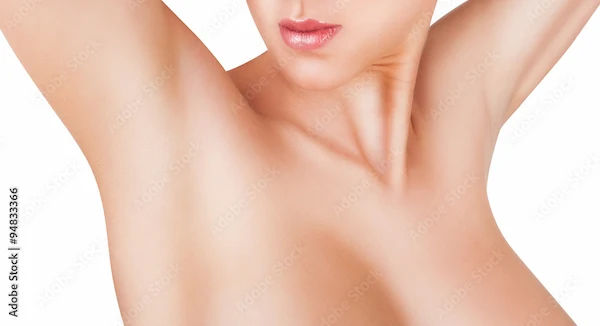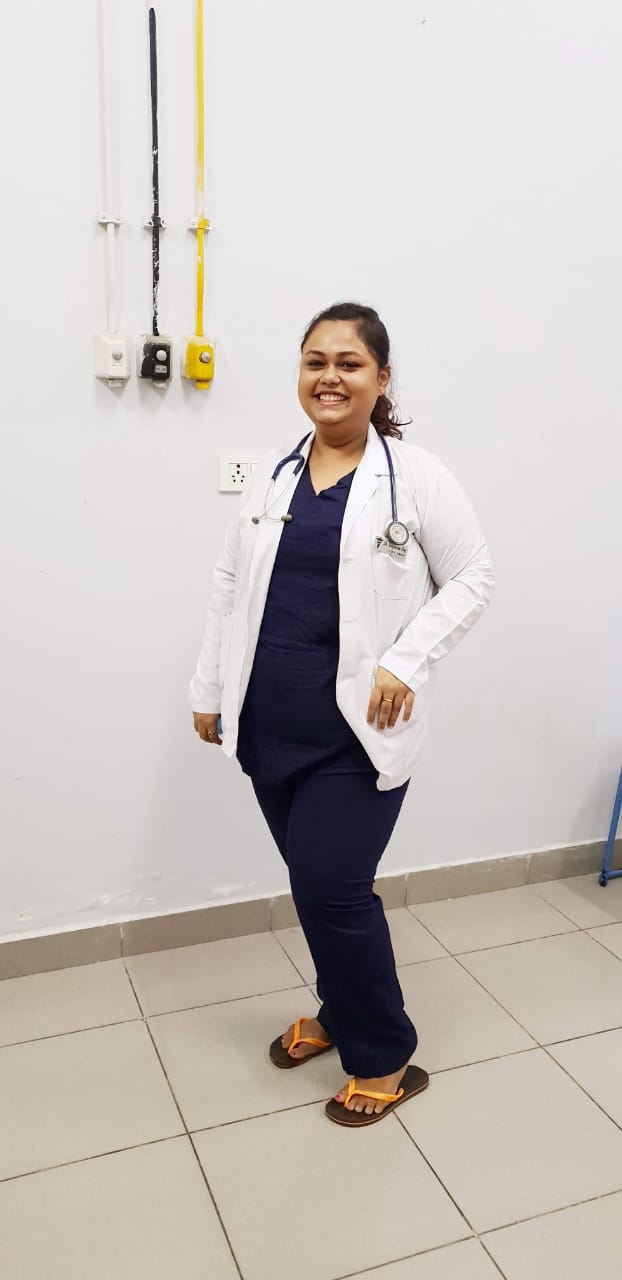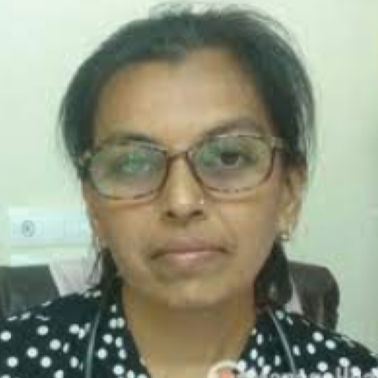How To Reduce Axillary Breast Tissue Naturally?
Natural reduction of axillary breast tissue: Explore non-surgical methods and lifestyle tips that may help address underarm breast tissue.

Written by Dr.Sonia Bhatt
Last updated on 3rd Jul, 2025

Introduction
Axillary breast tissue, also known as accessory breast tissue, is a condition where extra breast tissue develops in the armpit area. While it is usually harmless, it can sometimes cause discomfort, pain, or self-consciousness. Many people seek natural ways to reduce this excess tissue without surgery. In this article, we’ll explore what axillary breast tissue is, its causes, and natural methods to manage it effectively.
Understanding Axillary Breast Tissue
Axillary breast tissue is a variation of normal breast development. It occurs when breast tissue grows outside the usual breast area, typically under the armpit. This tissue is similar to regular breast tissue and may swell, become tender during hormonal changes (like menstruation or pregnancy), or even produce milk in some cases.
Common Symptoms of Axillary breast tissue
Symptoms of Accessory Breast Tissue are as follows:
A soft, lumpy mass in the armpit: This is a common presentation as the armpit is a frequent location for accessory breast tissue.
Swelling or tenderness, especially before periods: Like normal breast tissue, accessory breast tissue can become swollen and tender due to hormonal fluctuations during the menstrual cycle.
Discomfort when wearing tight clothing: The extra tissue can be compressed and cause discomfort or irritation when wearing restrictive garments.
Occasional pain or irritation: The tissue may sometimes become painful or irritated for various reasons, including hormonal changes or physical pressure.
Causes of Axillary breast tissue
Causes of axillary breast tissue are as follows:
Genetics: Having a family history of accessory breast tissue makes it more likely that you will also develop this condition due to inherited developmental traits.
Hormonal changes: Significant hormonal shifts during puberty, pregnancy, or menopause can stimulate the growth or increased prominence of existing axillary breast tissue.
Weight fluctuations: Changes in body weight, particularly weight gain, can make pre-existing axillary breast tissue more noticeable as fat accumulates in the area.
Consult Top Gynaecologists
Natural Ways to Reduce Axillary Breast Tissue
While surgery (like liposuction or excision) is an option for severe cases, many people prefer natural methods first. Here are some effective approaches:
Achieve and Maintain a Healthy Weight: Focus on a balanced diet rich in whole foods, limiting processed items, and staying hydrated to promote overall fat loss, which can reduce the prominence of axillary breast tissue. Incorporate regular full-body workouts, including cardio and strength training for the chest and arms.
Incorporate Targeted Upper Body Exercises: While spot reduction isn't feasible, exercises like push-ups, arm circles, and dumbbell flys can strengthen and tone the surrounding muscles, potentially improving the area's appearance.
Consider Gentle Massage: Lymphatic massage using light pressure from the armpit towards the chest may help improve circulation and reduce swelling in the accessory breast tissue. Natural oils can be used to facilitate the massage.
Wear Supportive Clothing: Opt for well-fitting bras with wide straps and good support to minimize discomfort and prevent irritation of the axillary breast tissue, avoiding tight or underwire styles that may compress it.
Explore Supportive Herbal Remedies: Some herbs like green tea (for potential weight loss support), turmeric (for inflammation reduction), and flaxseeds (for omega-3s and hormonal health) may be considered, though consult a healthcare professional for guidance.
Stay Well-Hydrated: Drink sufficient water to aid in toxin removal and reduce bloating, which can sometimes affect the appearance of the tissue.
Manage Potential Hormonal Triggers: If hormonal fluctuations seem to exacerbate swelling, consider reducing caffeine and alcohol intake and practicing stress-management techniques like yoga or meditation.
When to See a Doctor
While natural methods can help, consult a healthcare provider if:
The lump grows or becomes painful: Any noticeable increase in size or the development of pain in the axillary breast tissue warrants medical evaluation to rule out underlying issues.
You notice unusual discharge: Discharge from the axillary area is not typical and should be promptly checked by a healthcare professional to determine the cause.
There’s persistent discomfort: Ongoing or bothersome discomfort related to the axillary breast tissue should be discussed with a doctor for proper diagnosis and management options.
If you're concerned about axillary breast tissue, you can book a consultation with a specialist on Apollo 24|7 for personalized advice.
Conclusion
Axillary breast tissue is common and usually harmless. While natural methods like weight management, exercise, and massage can help reduce its appearance, always consult a doctor if you experience pain or unusual changes. Small lifestyle adjustments can make a big difference in comfort and confidence. Would you like help finding exercises or dietary plans tailored to your needs? Apollo 24|7 offers expert guidance—schedule a consultation today!
Consult Top Gynaecologists
Consult Top Gynaecologists

Dr Swatika Kumari
Obstetrician and Gynaecologist
19 Years • MBBS, DGO, DNB Obstetrics & Gynaecology
Nashik
Apollo 24|7 Clinic - Maharashtra, Nashik

Dr. Veena H
Obstetrician and Gynaecologist
16 Years • MBBS DGO
Bangalore
Apollo 24|7 Clinic - Karnataka, Bangalore

Dr. Priyanka Surisetty
Obstetrician and Gynaecologist
8 Years • MBBS, DGO
Visakhapatnam
Apollo 24|7 Clinic - Andhra Pradesh, Visakhapatnam

Dr. Sreeparna Roy
Obstetrician and Gynaecologist
8 Years • MBBS , MS (OBSTETRICS & GYNAECOLOGY), Fellowship in Infertility, Endoscopy & Ultrasonography), Fellowship in Laparoscopy & Hysteroscopy,DRM
Barasat
Diab-Eat-Ease, Barasat

Dr. Mona Yadav
Obstetrician and Gynaecologist
19 Years • MBBS, MD (Obstetrics & Gynaecology)
Dombivli
Nulife multispeciality, Dombivli
Consult Top Gynaecologists

Dr Swatika Kumari
Obstetrician and Gynaecologist
19 Years • MBBS, DGO, DNB Obstetrics & Gynaecology
Nashik
Apollo 24|7 Clinic - Maharashtra, Nashik

Dr. Veena H
Obstetrician and Gynaecologist
16 Years • MBBS DGO
Bangalore
Apollo 24|7 Clinic - Karnataka, Bangalore

Dr. Priyanka Surisetty
Obstetrician and Gynaecologist
8 Years • MBBS, DGO
Visakhapatnam
Apollo 24|7 Clinic - Andhra Pradesh, Visakhapatnam

Dr. Sreeparna Roy
Obstetrician and Gynaecologist
8 Years • MBBS , MS (OBSTETRICS & GYNAECOLOGY), Fellowship in Infertility, Endoscopy & Ultrasonography), Fellowship in Laparoscopy & Hysteroscopy,DRM
Barasat
Diab-Eat-Ease, Barasat

Dr. Mona Yadav
Obstetrician and Gynaecologist
19 Years • MBBS, MD (Obstetrics & Gynaecology)
Dombivli
Nulife multispeciality, Dombivli